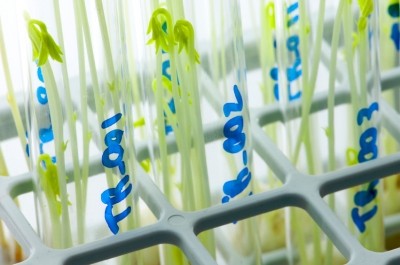GM 'jellyfish lamb' enters French food chain

INRA, France's publicly-funded research institute, has been ordered to submit a report to the Ministry of Agriculture today explaining how one of its sheep bred for scientific research ended up on a plate.
An internal inquiry conducted by INRA found that an employee may have deliberately sold the GM sheep to a conventional abattoir which processes meat for human consumption.
Benoît Malpaux, director of the INRA centre in Jouy-en-Josas where the incident took place, said: “Certain troubling elements of the administrative inquiry would imply that the employee wanted to trap his team leader with whom he had less than cordial relations.”
Agricultural minister Stéphane le Foll confirmed on French public radio that it appeared to be ‘a deliberate act of malice’.
Operation 'Green Sheep'
The sheep in question was Rubis the lamb, born to a genetically modified ewe who had had a jellyfish protein (Aequorea victoria) inserted into its genome. INRA scientists were conducting research into human cardiology as part of the programme named 'Mouton Vert' or Green Sheep.
The protein - known as Green Fluorescent Protein (GFP) - was used to turn the sheep’s cells green. Rubis was carrying the protein but did not express it – meaning, unlike its mother, Rubis' skin was not fluorescent green.
While the animals used in INRA's experiments are normally put down and then incinerated, the GM lamb was sent to an abattoir with ‘normal’ sheep destined for human consumption on 5 August 2014. In October Rubis was sold for food, although it is not known to whom.
Malpaux said: “Although it should not have been placed on the market, eating this meat does not pose any risk to consumers’ health.”
But le Foll said that what had happened was unacceptable.
“The rule is that even if there are animals that are used for research, they must not end up in the food system, it’s a basic principle. Here, we have had a breach of this principle,” he told French radio listeners.
Consumer rights groups have also been speaking out against the contamination. Camille Perrin, senior food policy officer at BEUC, told FoodNavigator that no GM food should be allowed to reach consumers’ plates without a full pre-market safety evaluation and proper labelling,and that tougher restrictions were required.
’’After lab horses sold as meat, this GM lamb story is one more episode showing the need for more effective measures and controls. Animals bred for research purposes should not be entering the food chain.
’’Research bodies should take all necessary steps to better shield against malevolent or dishonest employees whose behaviour might put people’s health at risk,’ she said.
How did it happen?
INRA raises its own livestock for experiments. The animals that are unsuitable for use in experiments and therefore 'untouched' - male sheep that are not needed for an experiment requiring only females for instance - are sold to conventional slaughterhouses for food. The money earned through the sale is then channelled back to help finance the research.
The sale of the GM lamb was concealed by the employee responsible until 5 November 2014, upon which INRA immediately launched an internal administrative inquiry.
An act of transparency?
INRA claims that following the inquiry it took the necessary measures - suspending the sale of all livestock, suspending the member of staff who concealed the sale and destroying all the GM materials -and has insisted that it acted transparently.
But French Environment Code prohibits the sale of any product consisting of genetically modified organisms or containing such organisms, and so the case has been transferred to the Public Prosecutor’s office with a maximum possible charge of one year in prison and a €75,000 fine.
Revealed by French newspaper Le Parisien, the story broke on the same day last week that EU Commissioner for health and food safety, Vytenis Andriukaitis, told a Europabio conference in Brussels that the EU suffered from a clear lack of understanding about the benefits of current generation GMOs.
Andriukaitis also said there was a need in Europe for more sustainable and responsible biotech innovation, and that the biotech industry must work to gain the trust of European consumers.

























